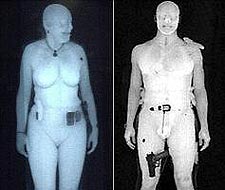European Commission Issue Public Consultation On Mobile Phone Radiation
Health concerns continue with regard to the effects on human health of electromagnetic fields emitted by mobile phones, airport passenger security scanners, and in domestic products such as cordless telephones (DACT) and micro wave ovens.
 On 13th December, the European Commission and the Scientific Committee on Emerging and Newly Identified Health Risks (SCENIHR) launched a public consultation on the request for a new scientific opinion on the potential health effects of exposure to EMF.
On 13th December, the European Commission and the Scientific Committee on Emerging and Newly Identified Health Risks (SCENIHR) launched a public consultation on the request for a new scientific opinion on the potential health effects of exposure to EMF.
Interested parties are invited to submit comments and relevant scientific evidence here by 27 January 2012.
The Commission relies on the SCENIHR to periodically review new information that may influence the assessment of risks to human health in this area and to provide regular updates on the scientific evidence base to the Commission.
This request is the fifth since the adoption of the Council Recommendation.
Council Recommendation of 12 July 19991 on the limitation of exposure of the general public to electromagnetic fields (0 Hz to 300 GHz) fixes basic restrictions and reference levels for the exposure of the general public to electromagnetic fields (EMFs). It also invites the Commission to "keep the matters covered by this recommendation under review, with a view to its revision and updating, taking into account possible effects, which are currently the object of research, including relevant aspects of precaution".
To date, four reviews of the scientific evidence supporting the Council Recommendation have been carried out:
* by the Scientific Steering Committee (SSC) in its opinion on health effects of EMFs of 25–26 June 19982,
* by the Scientific Committee on Toxicity, Ecotoxicity and the Environment (CSTEE) in its opinion of 30 October 2001,
* by the SCENIHR in its opinions of March 2007, January 2009 and July 2009.
So far, while these opinions did not identify any scientific rationale that could justify a modification of the Council Recommendation, they identified knowledge gaps and made recommendations for additional research on this issue.
 Since September 2008, the previous review by the SCENIHR, a sufficient number of new scientific publications have appeared to warrant a new analysis of the scientific evidence on the possible health effects of EMF exposure.
Since September 2008, the previous review by the SCENIHR, a sufficient number of new scientific publications have appeared to warrant a new analysis of the scientific evidence on the possible health effects of EMF exposure.
In addition, the development of new technologies using EMF in the THz range, especially imaging techniques such as security scanners for passenger screening, calls for new assessments.
On 16-17 November 2011, the International Conference on EMF and Health, organized by the European Commission, provided an overview of the most recent scientific developments in this area and identified gaps in knowledge and areas that deserve special attention.
The conference conclusions led to the latest request to the SCENIHR.
Consequently, the SCENIHR is being asked to examine this new scientific evidence and to address in particular the questions listed in the Terms of Reference.
The Committee is requested:
1. To update its opinions of 20098,9 in the light of newly available information.
2. To give particular attention to issues affected by important gaps in knowledge in the previous opinions, especially:
* the potential adverse effects of EMF on the nervous system, including
neurobehavioural disorders and on the risk of neoplastic diseases,
* the understanding of biophysical mechanisms that could explain observed biological
effects and epidemiological associations, and
* the potential role of co-exposures with other environmental stressors in biological
effects attributed to EMF.
3. To review the scientific evidence available to understand the potential adverse health
effects of EMF in the THz range.
4. To develop a set of prioritized research recommendations taking updating previous efforts in this area (in particular by the SCENIHR and the WHO). These recommendations should include methodological guidance on the experimental design and minimum requirements to ensure data quality and usability for risk assessment.
Deadline: December 2012
Source: Sanco (EU Directorate General for Health & Consumers)



 Since September 2008, the previous review by the SCENIHR, a sufficient number of new scientific publications have appeared to warrant a new analysis of the scientific evidence on the possible health effects of EMF exposure.
Since September 2008, the previous review by the SCENIHR, a sufficient number of new scientific publications have appeared to warrant a new analysis of the scientific evidence on the possible health effects of EMF exposure.